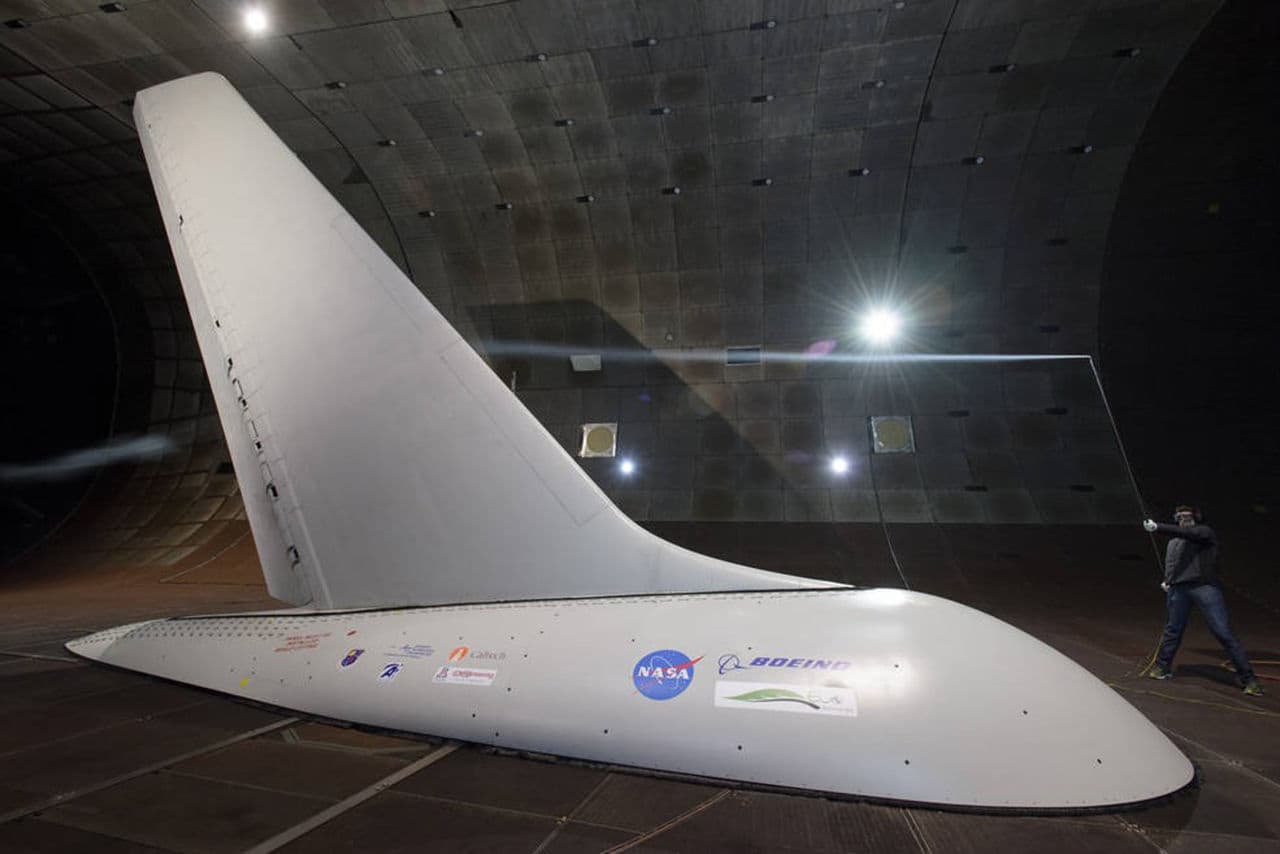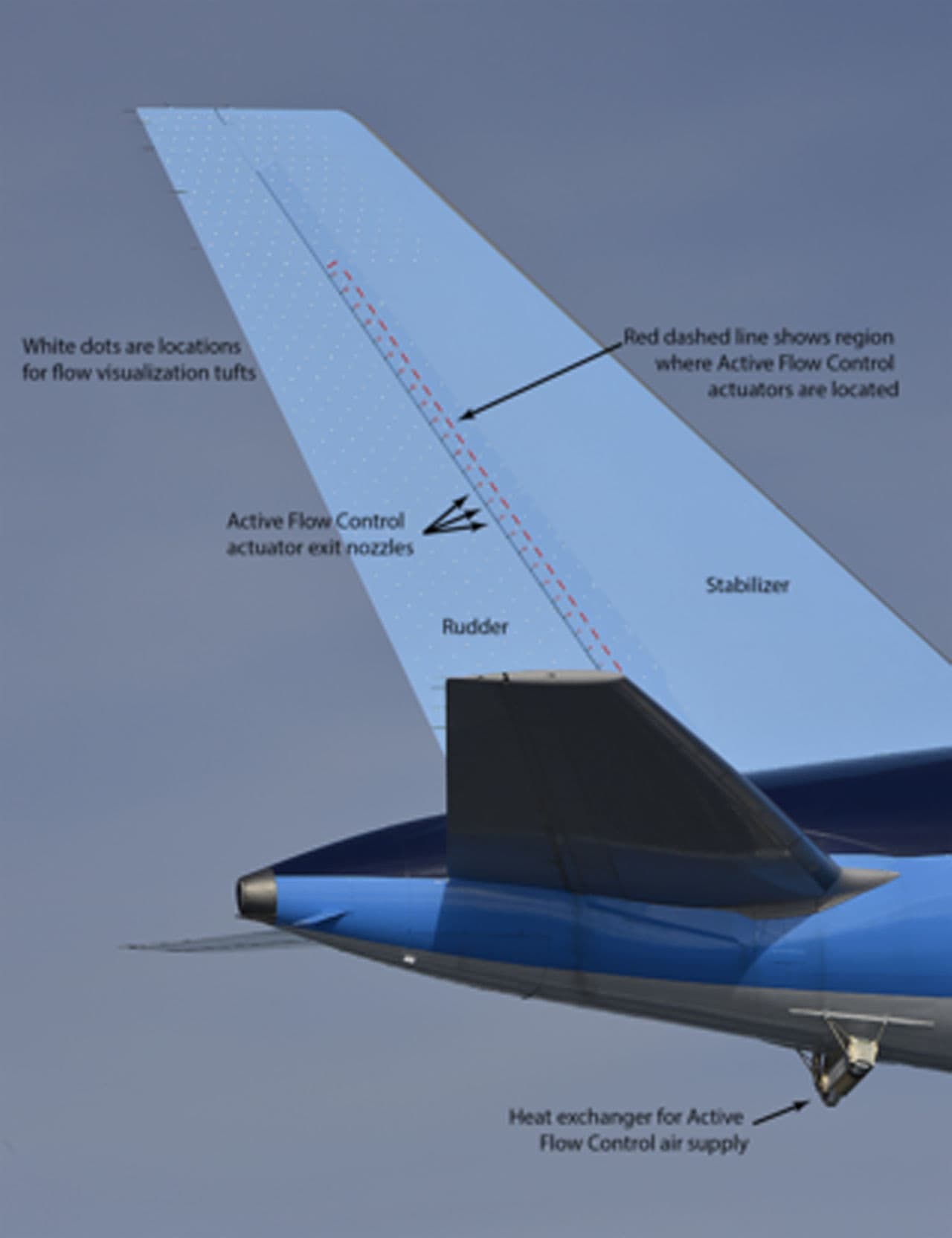Advertisement
Climate-Friendly Flying
ResumeMaking big commercial airplanes more climate-friendly. From batteries to alternative fuel and new designs, we’ll look at what’s on the drawing board for cleaner air travel. Plus, a look at whether the new cars at the Detroit auto show will meet federal emissions standards.

All over the world, people are bending over backwards now to try to figure out how to lower the CO2 emissions that lead to climate change. But every time we step onto a jet airliner, those big jet engines pour out greenhouse gases. If it were a country, the world’s aviation industry would be the sixth-biggest CO2 emitter. Now there are big ideas on the drawing board to change that. This hour On Point, thinking outside the box to clean up air travel.
-- Tom Ashbrook
Guests
Jay Dryer, director of the Advanced Air Vehicles Program at NASA.
Ed Waggoner, director of the Integrated Aviation Systems program at NASA.
Daniel Rutherford, program director at the International Council on Clean Transportation.
From Tom’s Reading List
New York Times: Rethinking the Airplane, for Climate’s Sake -- "Commercial aviation accounts for about 2 percent of the global total of carbon dioxide emitted annually by human activity, or a little less than is produced by Germany. Although manufacturers and airlines have made air travel far more efficient — the Air Transport Action Group, an industry organization, estimates that emissions per seat-mile are down 70 percent from the 1960s, when jets began operating — the industry’s tremendous growth has resulted in higher total emissions."
Grist: NASA is designing a new, improved airplane wing -- "If you want to see the best and worst of humanity in one place, look no further than an airplane. Those giant metal flying machines are exemplars of human innovation — yet each one is full of ungrateful passengers, too busy freaking out every time someone accidentally invades their personal bubble to revel in the miracle of flight. As the comedian Louis C.K. put it: 'Everybody on every plane should just constantly be going, ‘Oh my god! Wow!''"
WIRED: The Paris Climate Talks Will Emit 300,000 Tons of CO2, by Our Math. Hope It’s Worth It — "Those people will arrive on trains, cars, but mostly airplanes. When flown at full capacity (and the airline industry being what it is, and the Paris meetings being what they are, there’s little reason to think the planes will be anything but packed), a Boeing 747 (a happy medium between private jets and bullet trains) gets about 16.5 miles per gallon of jet fuel. Between 50,000 attendees, that’s about 27 million gallons of the stuff."
See More Photos Of Experimental NASA Airplane Designs




Can Detroit Meet Auto Emissions Deadlines?
David Shepardson, regulatory policy and technology reporter for Reuters. (@davidshepardson)
Reuters: Detroit's auto industry is changed, but not as Washington planned — "When U.S. President Barack Obama visits Detroit's annual auto show on Jan. 20, exactly one year before he leaves office, he is expected to tout how much the industry has changed since he orchestrated a federally funded rescue in 2009. But many of the changes on display at the city's annual auto show will not reflect the green-transport revival the president envisioned."
This program aired on January 14, 2016.